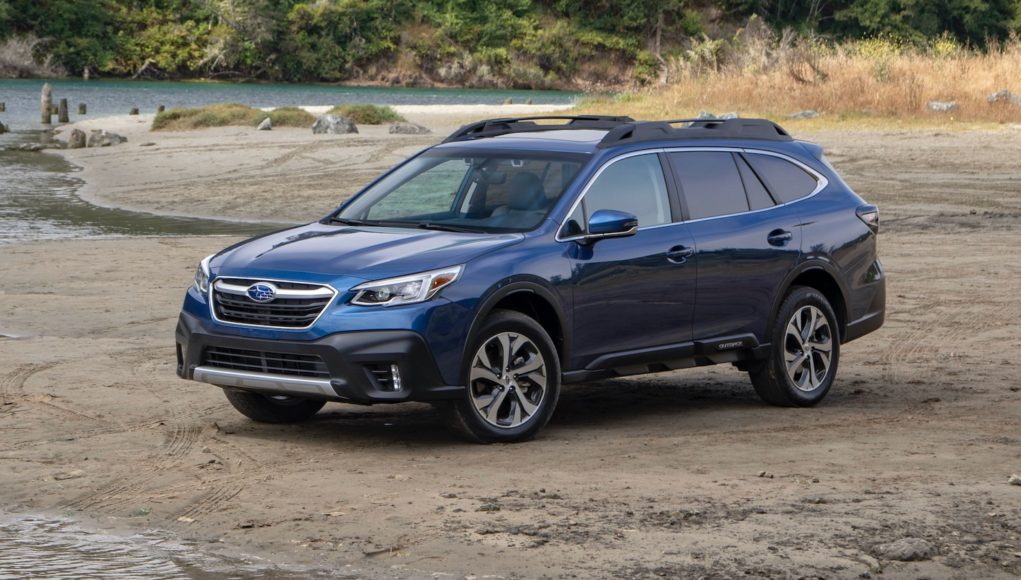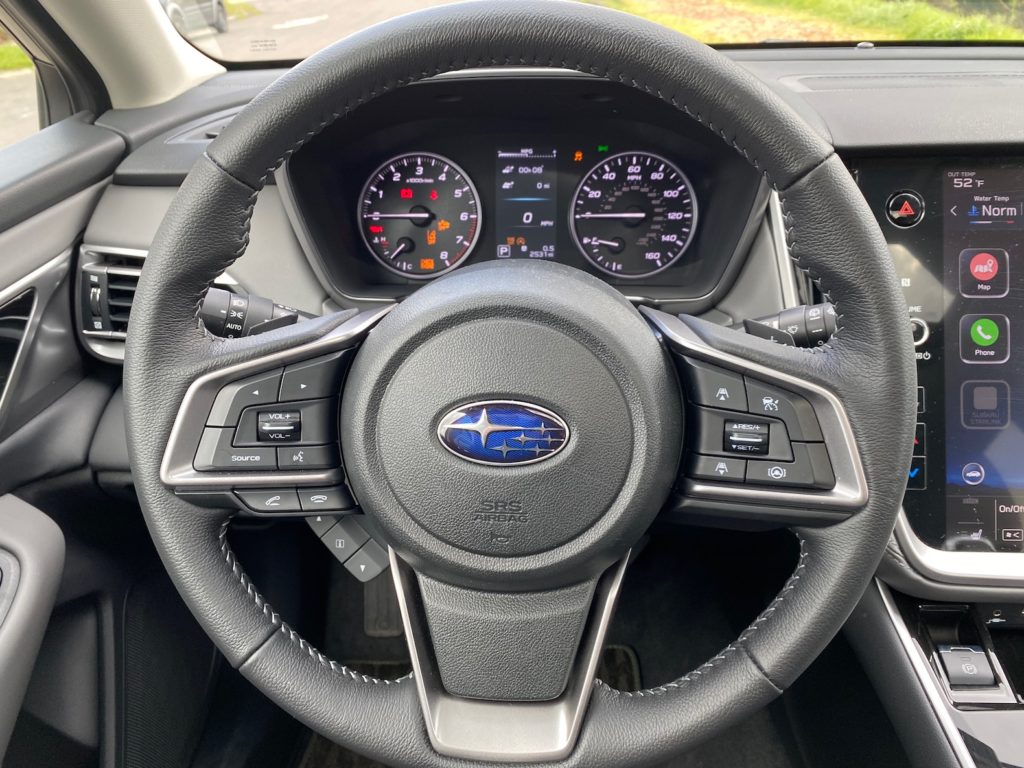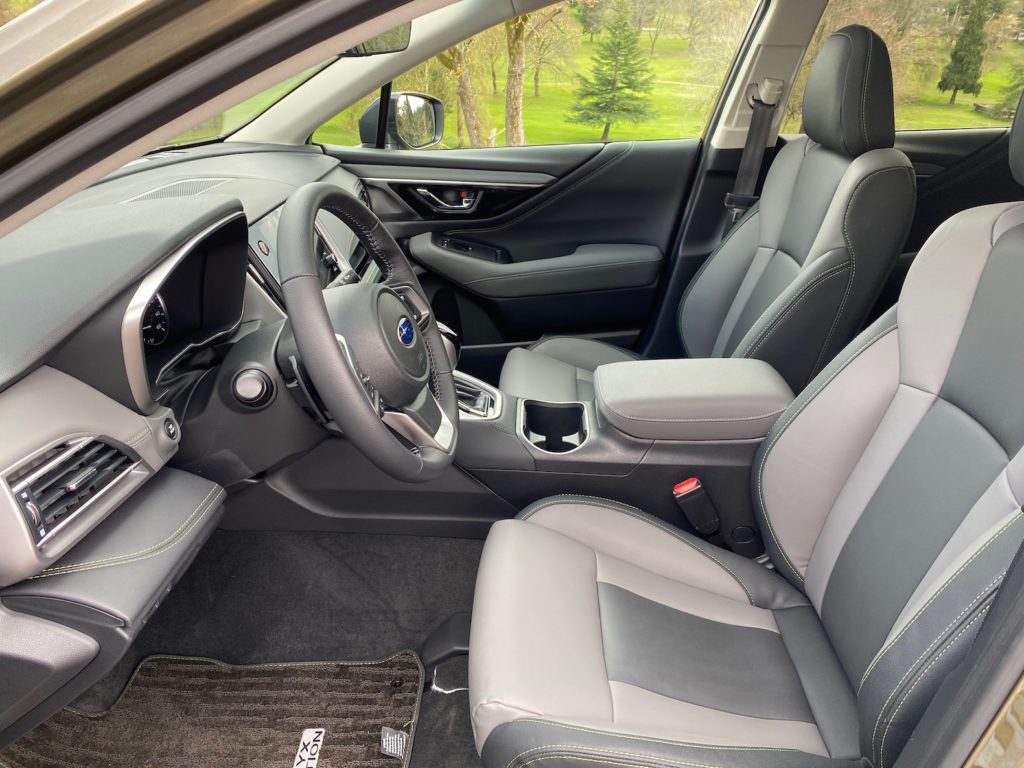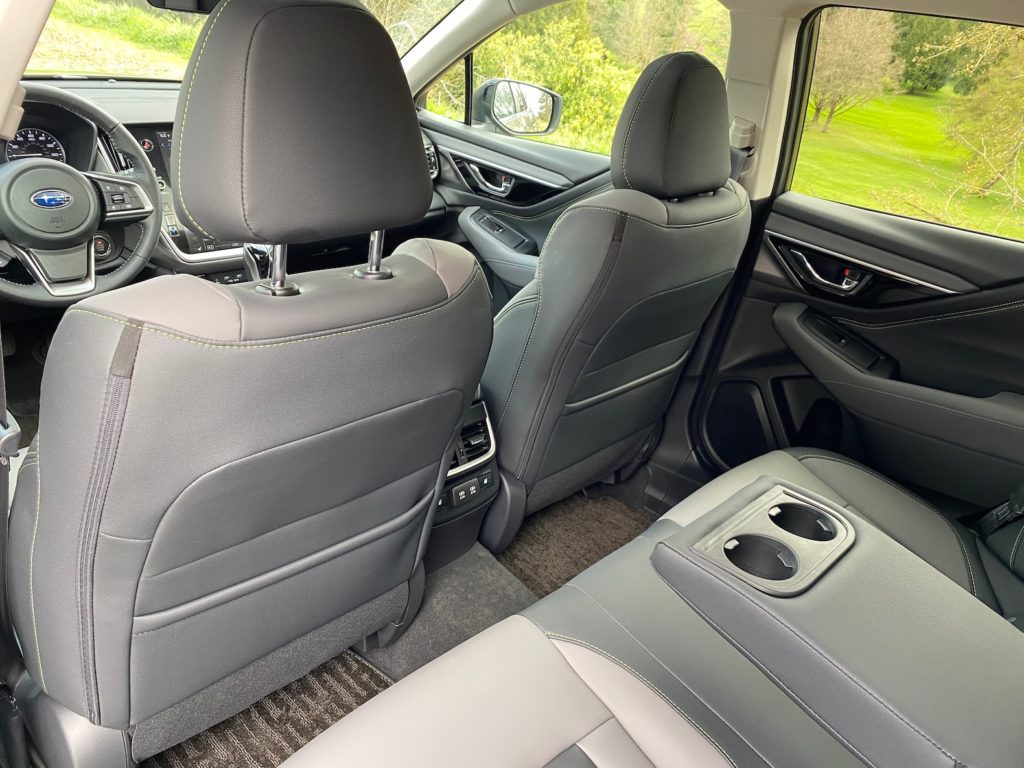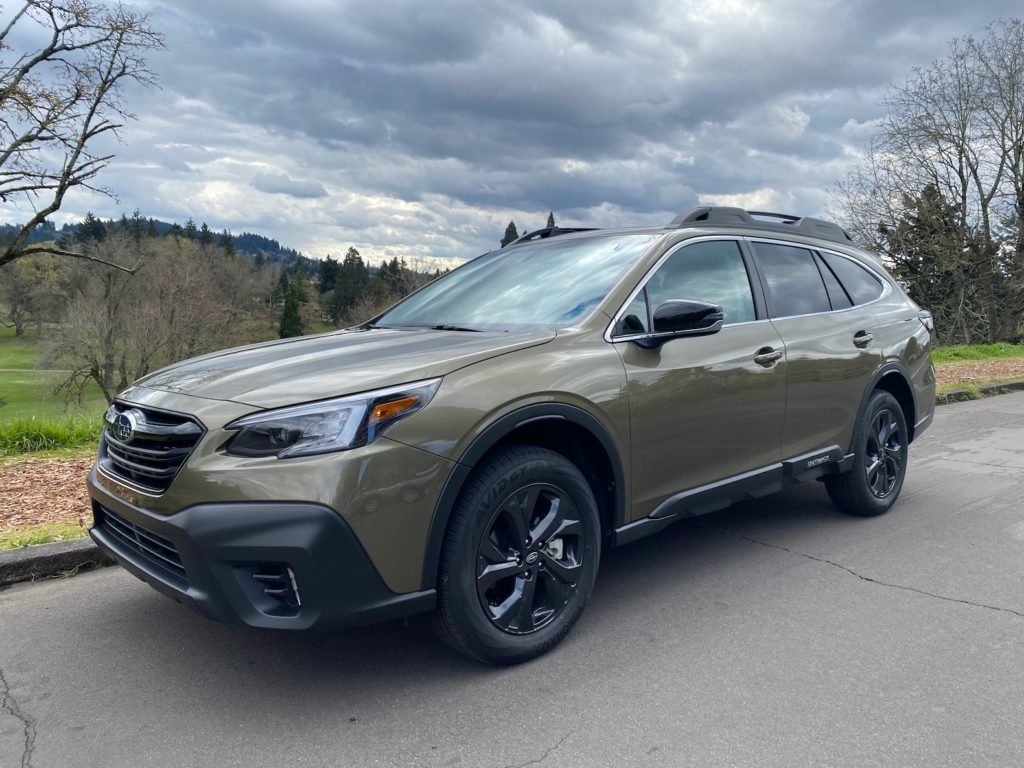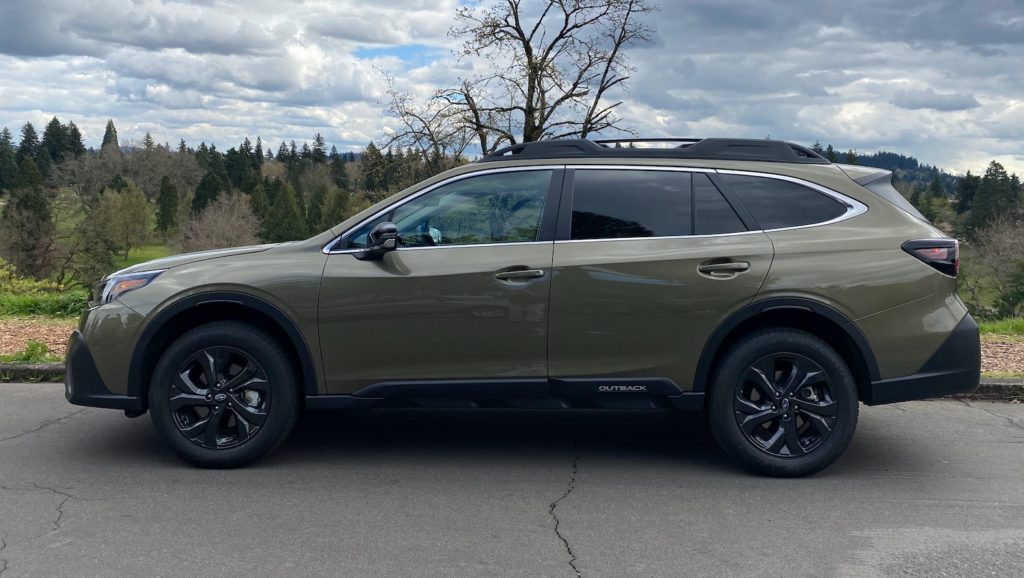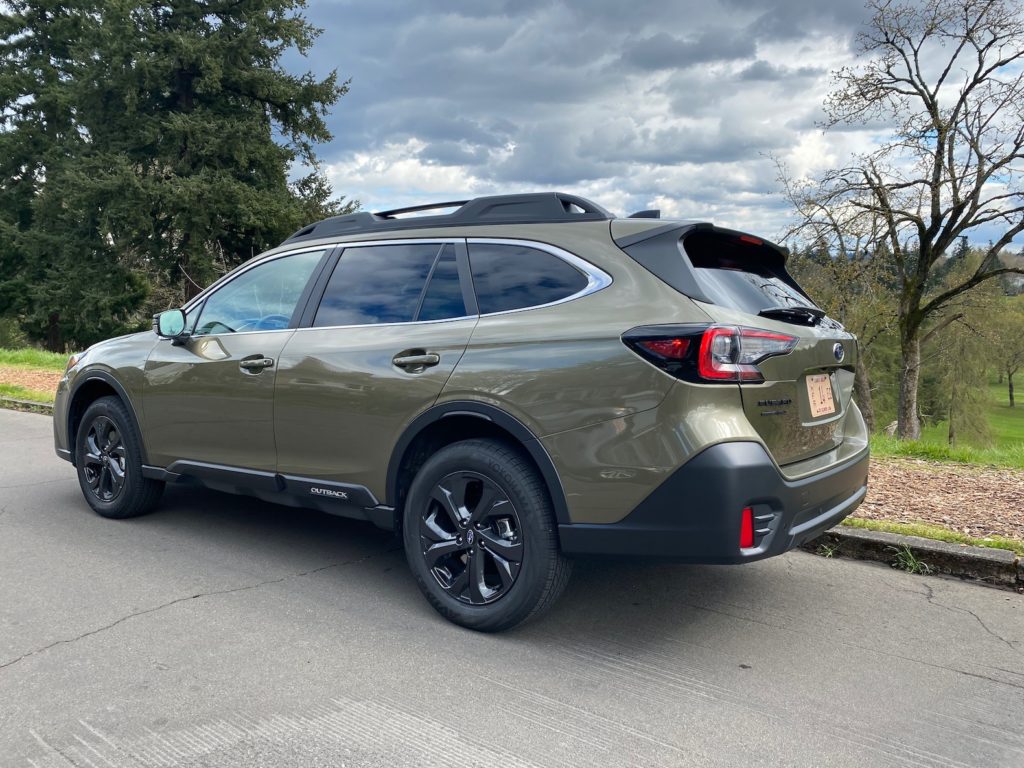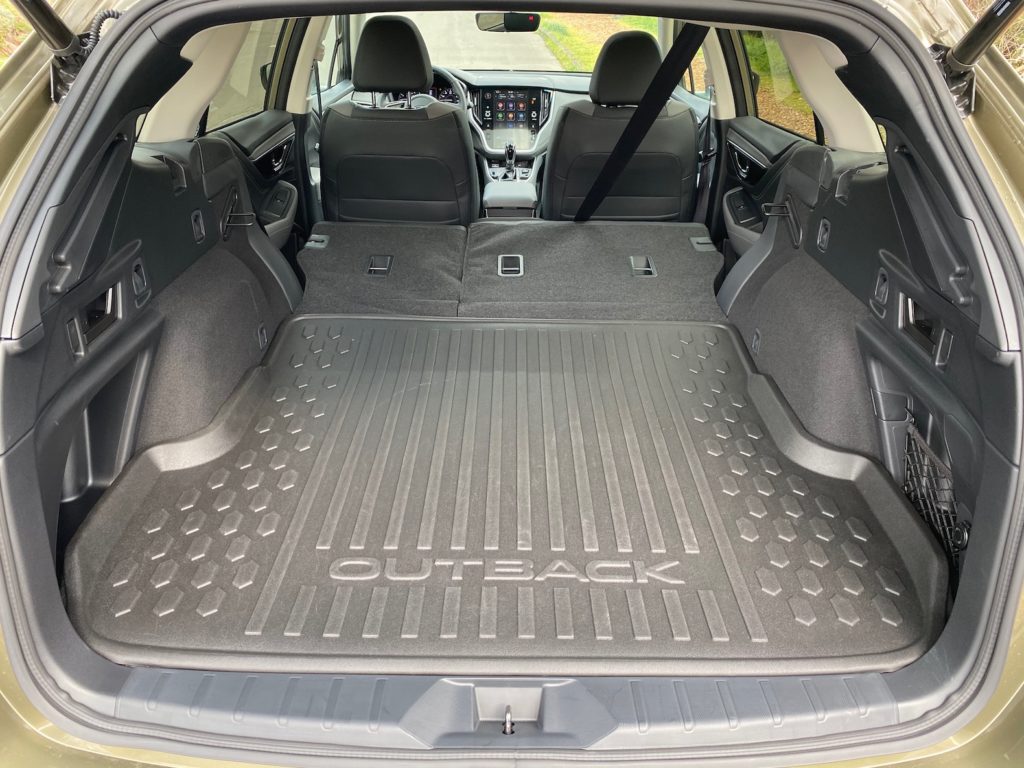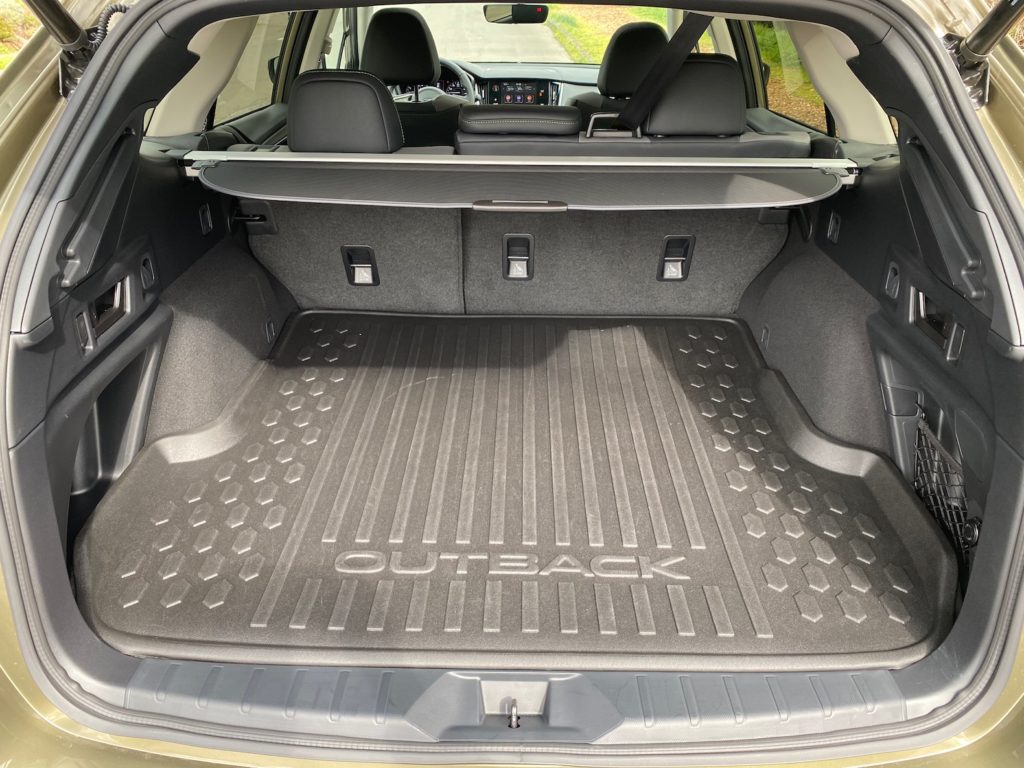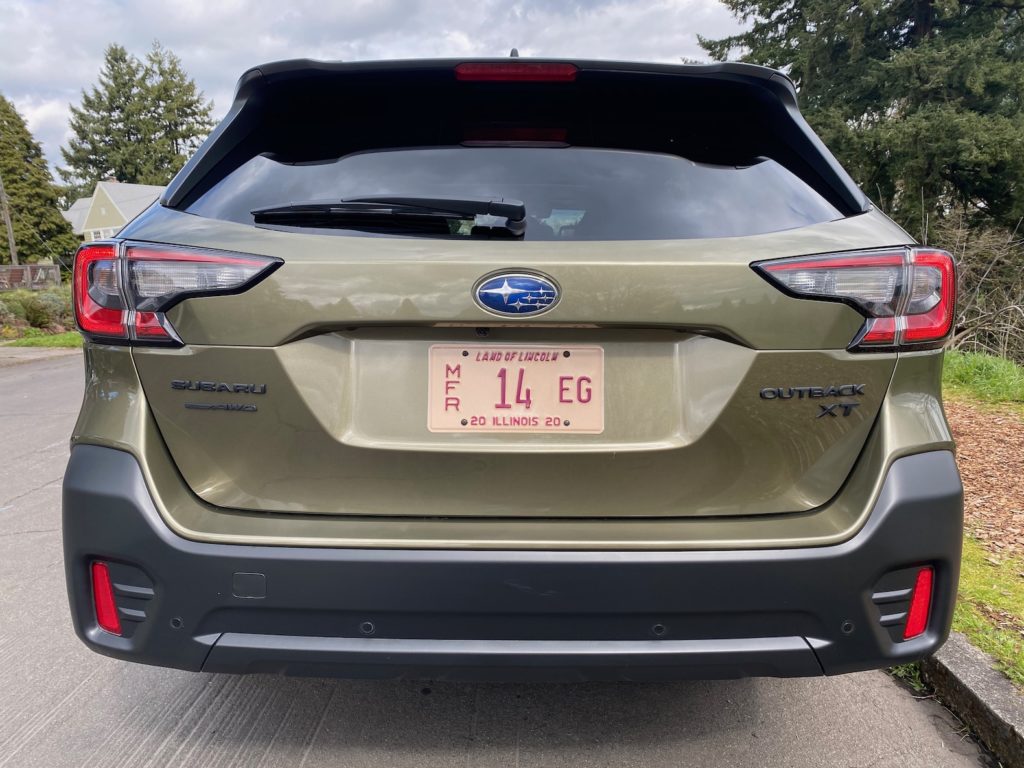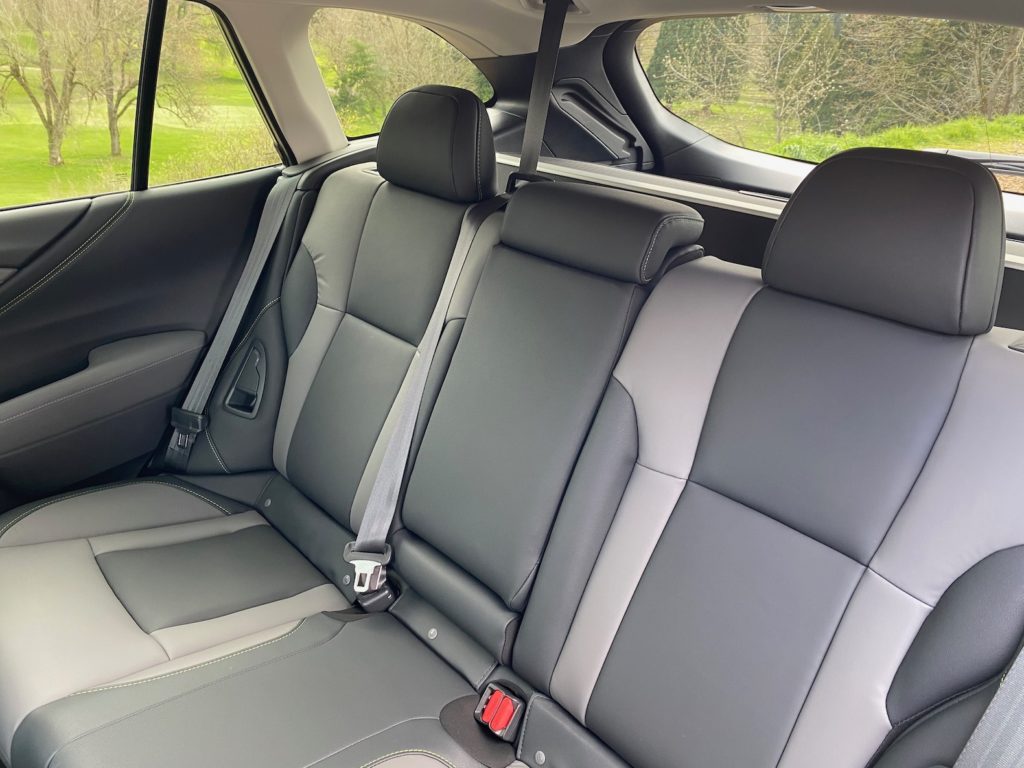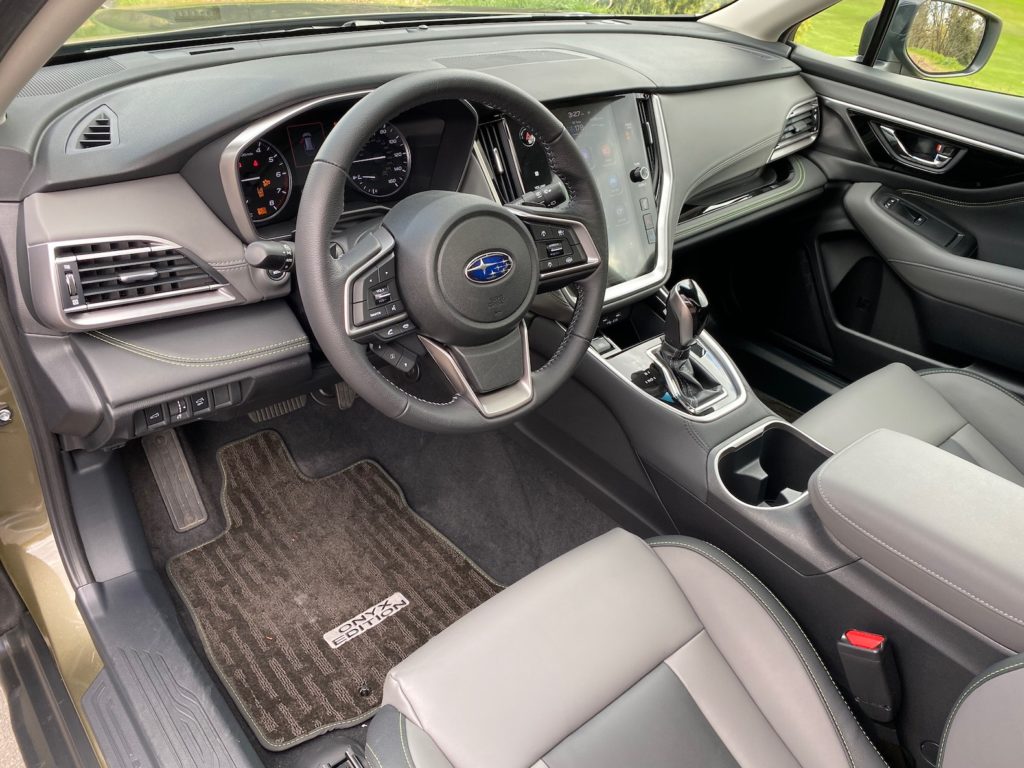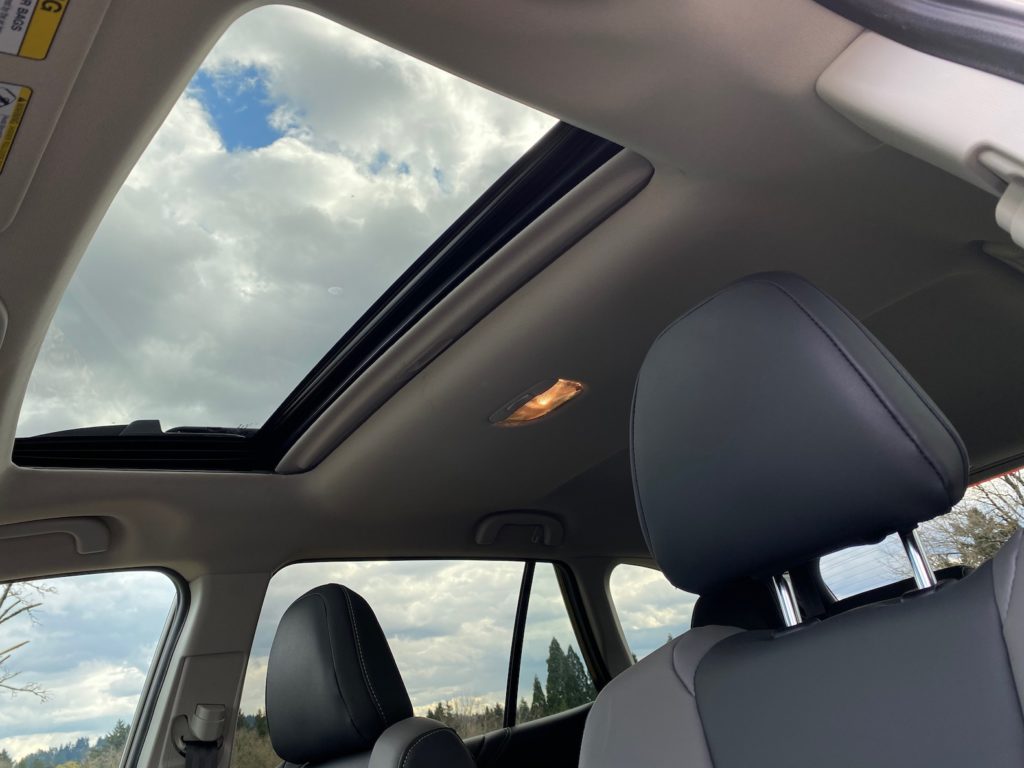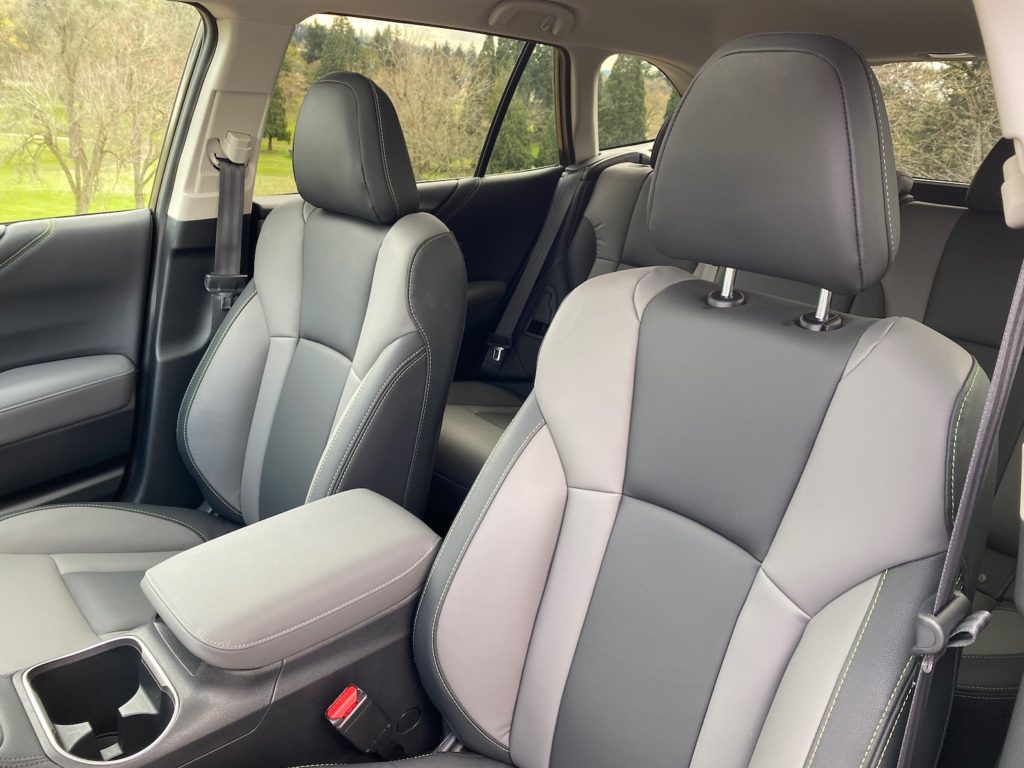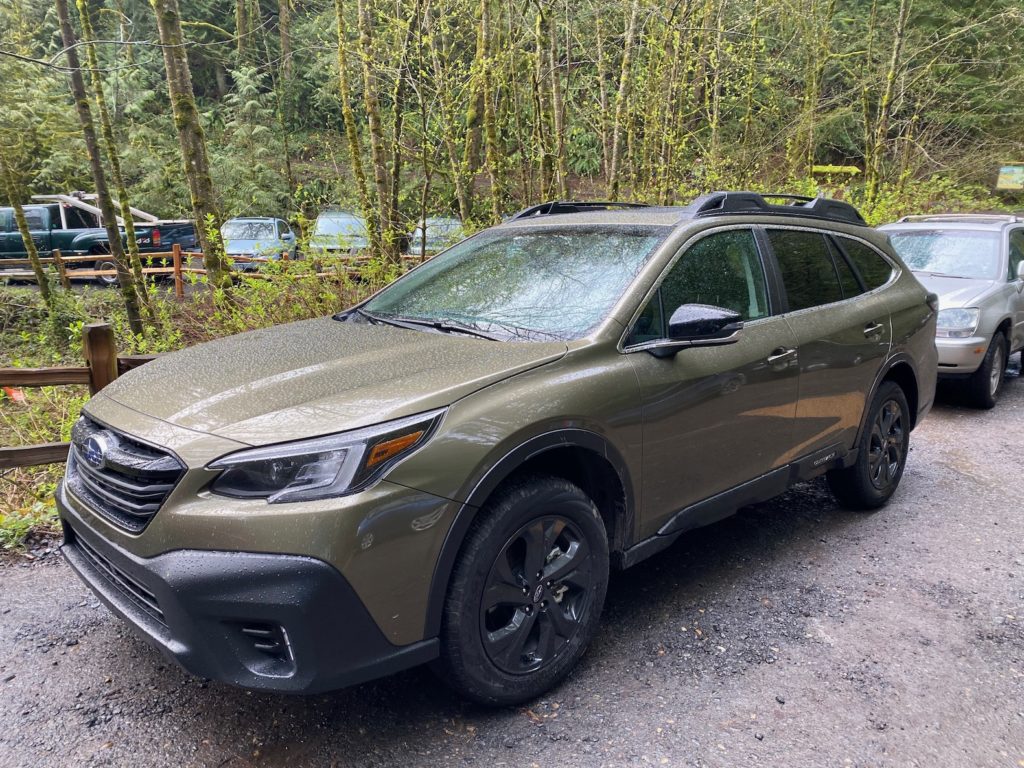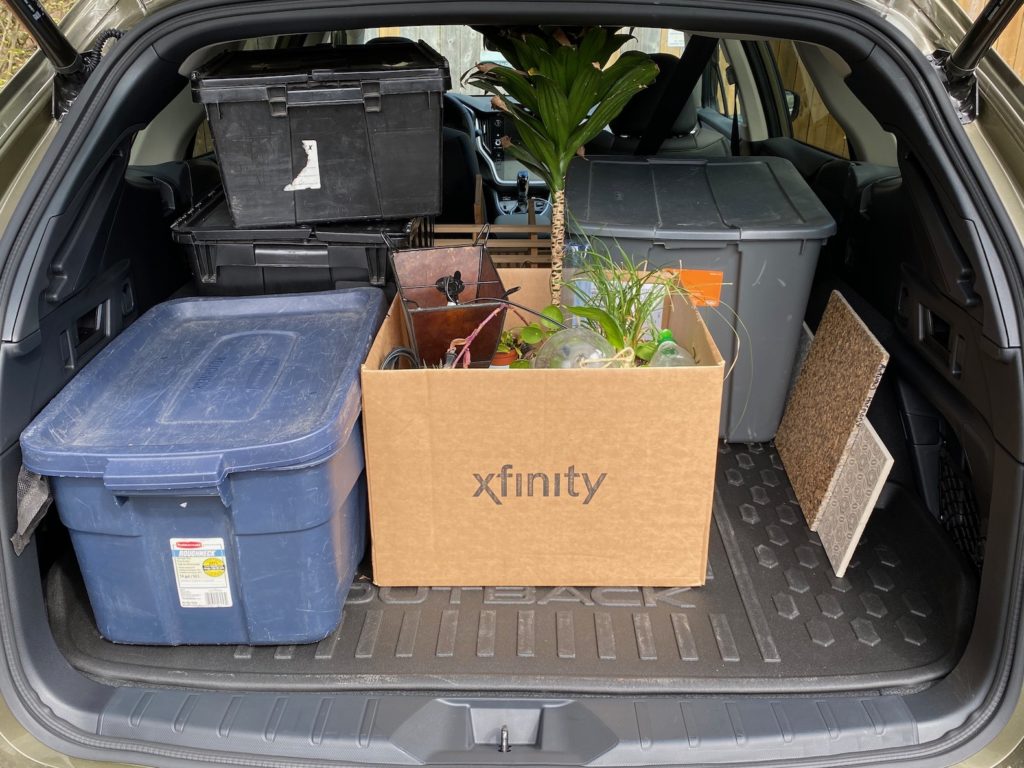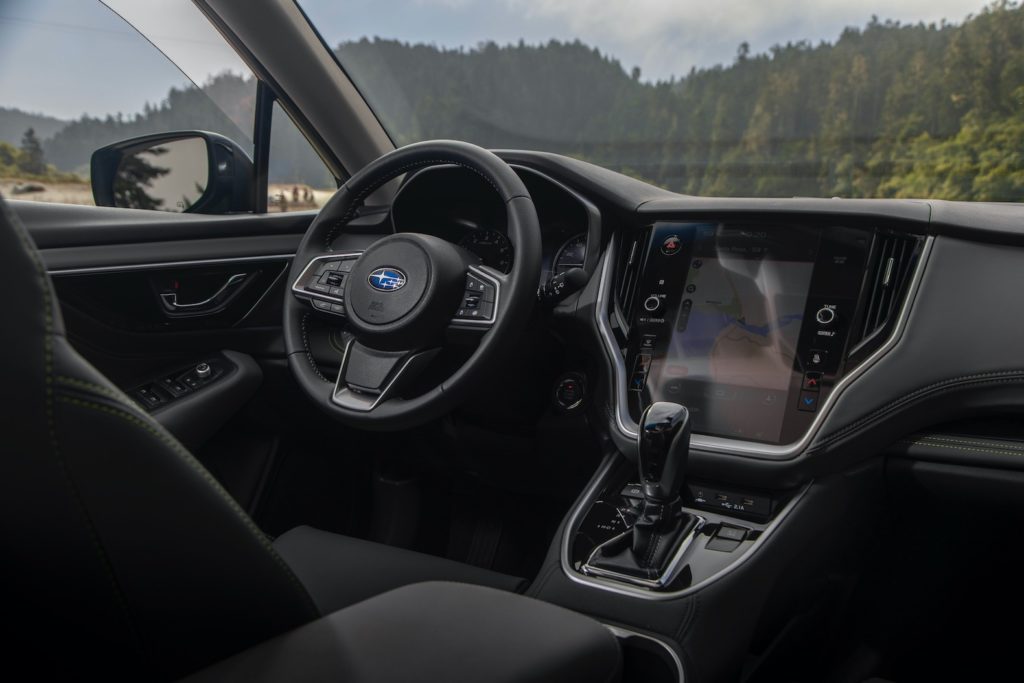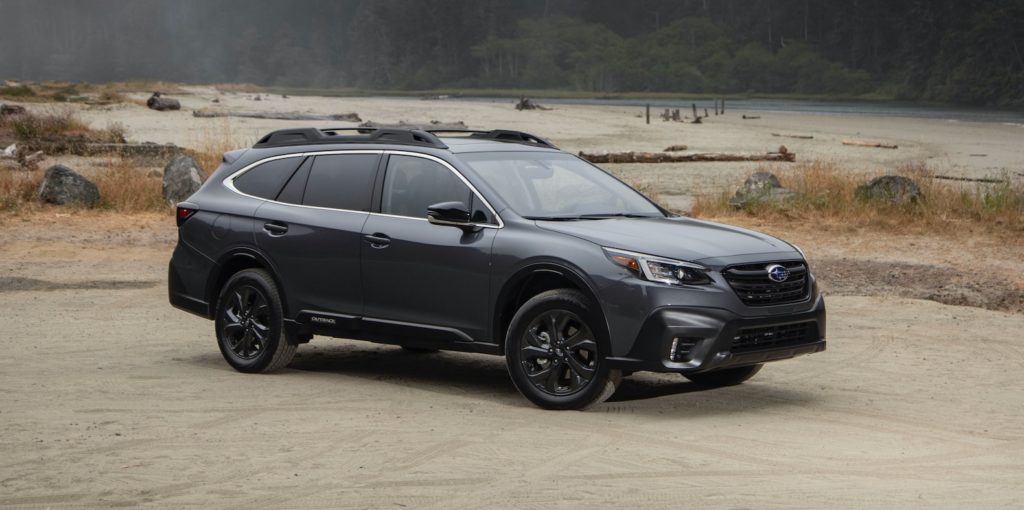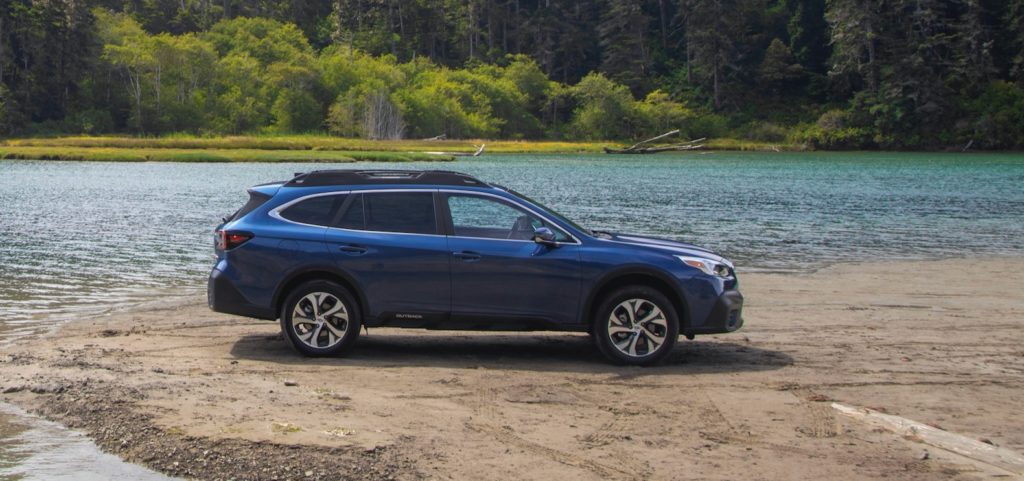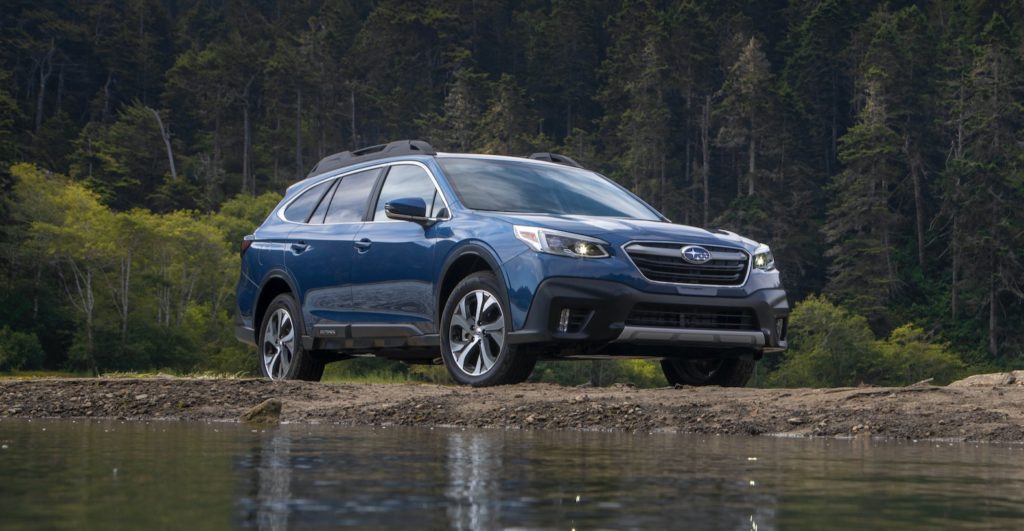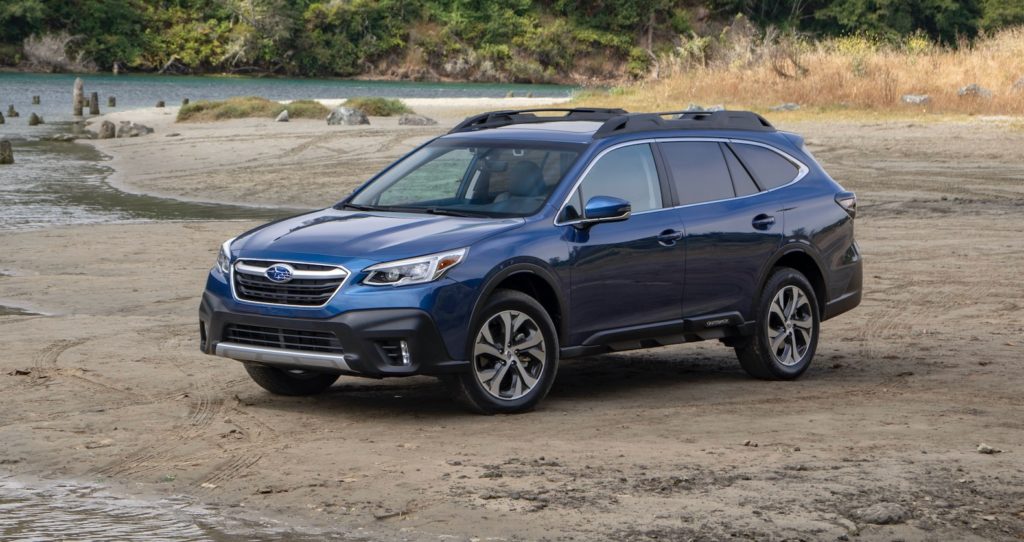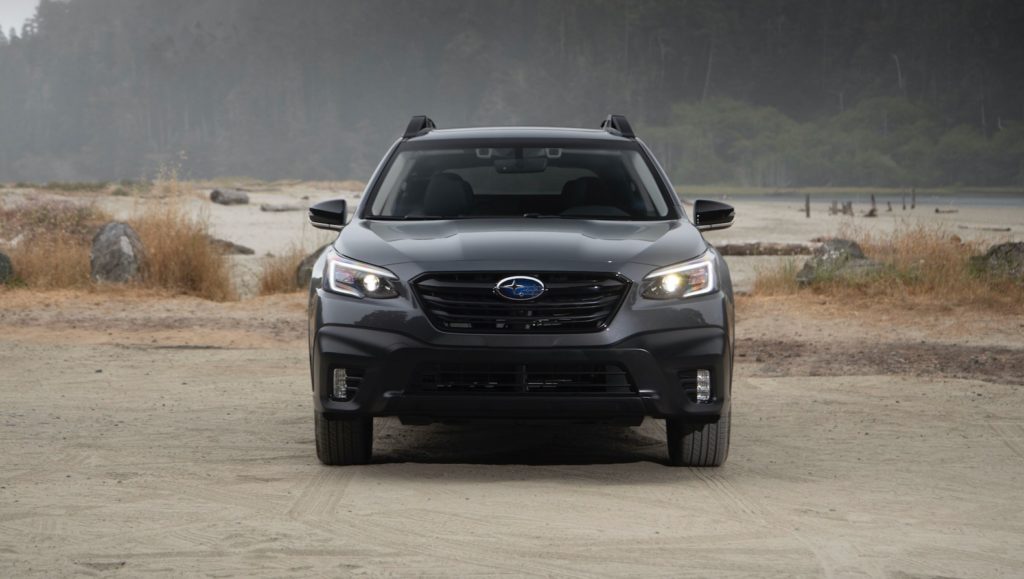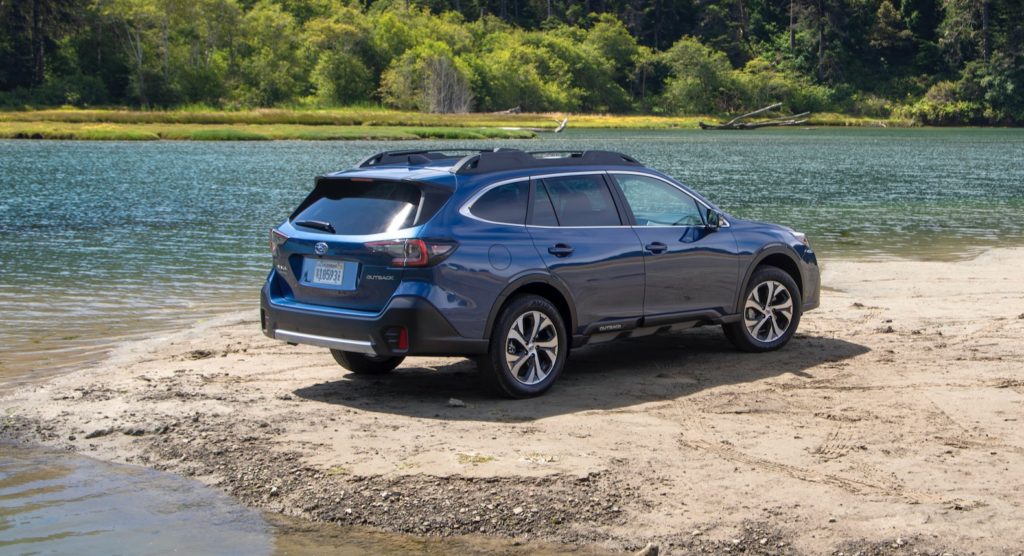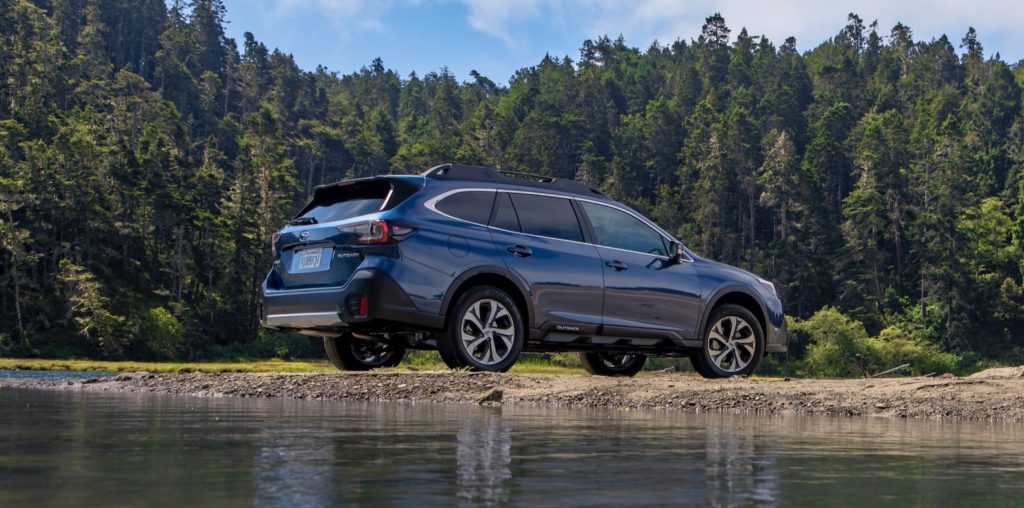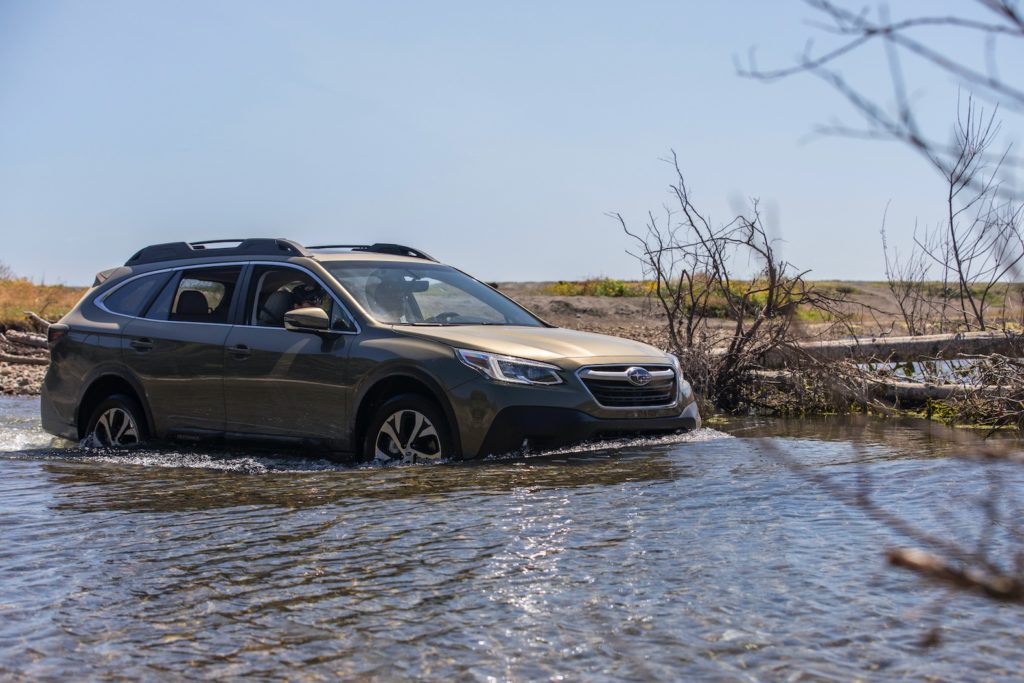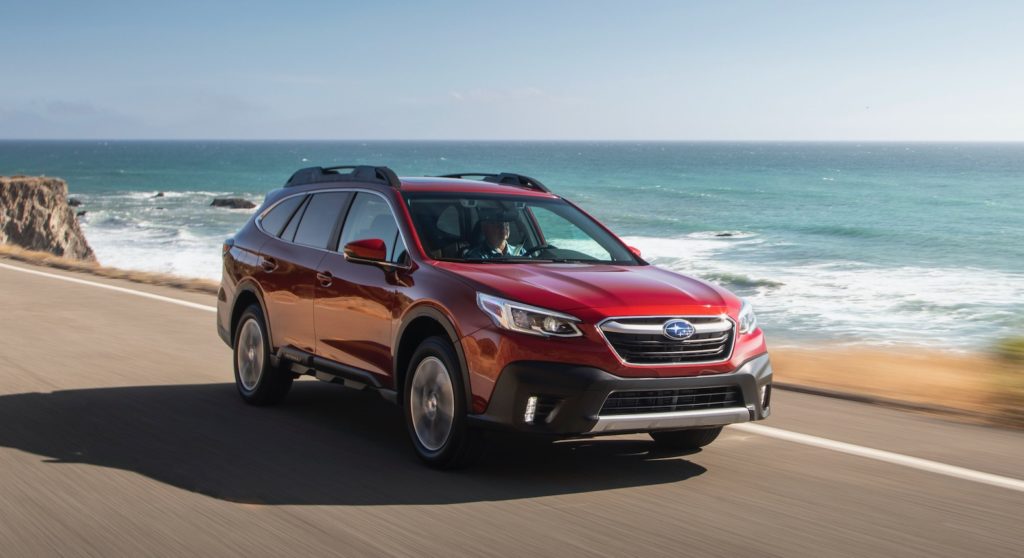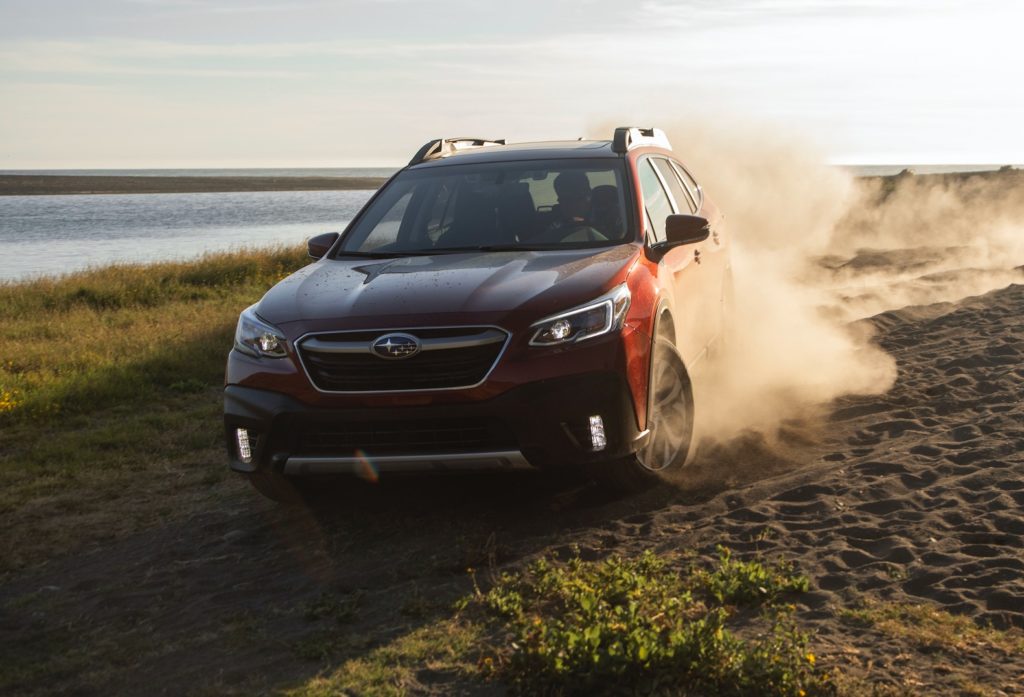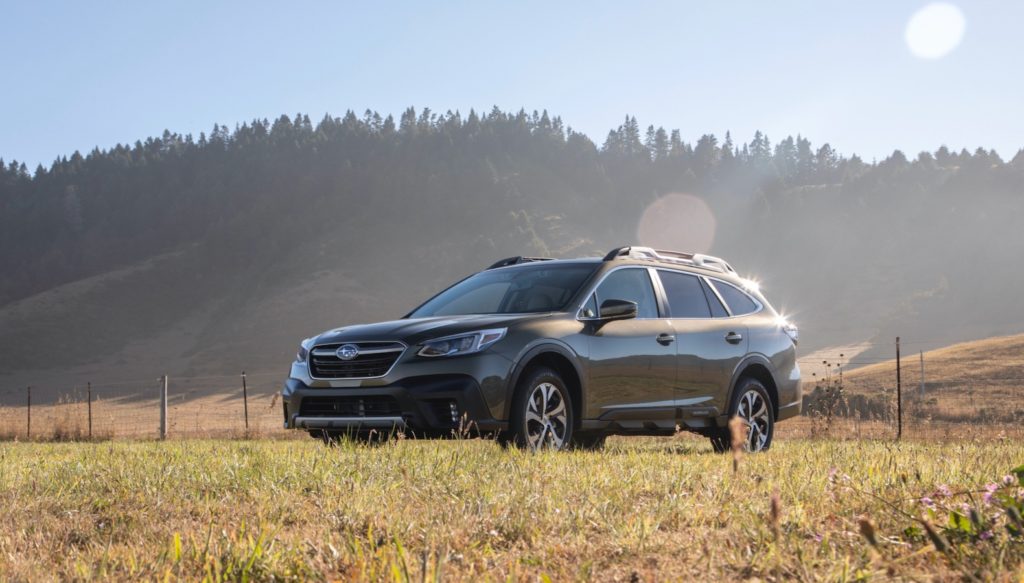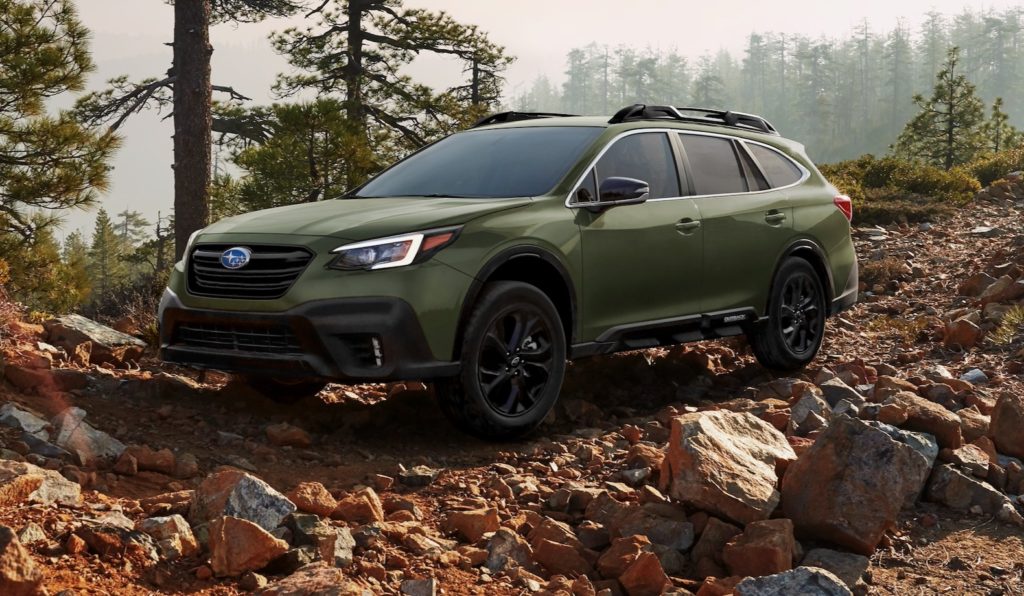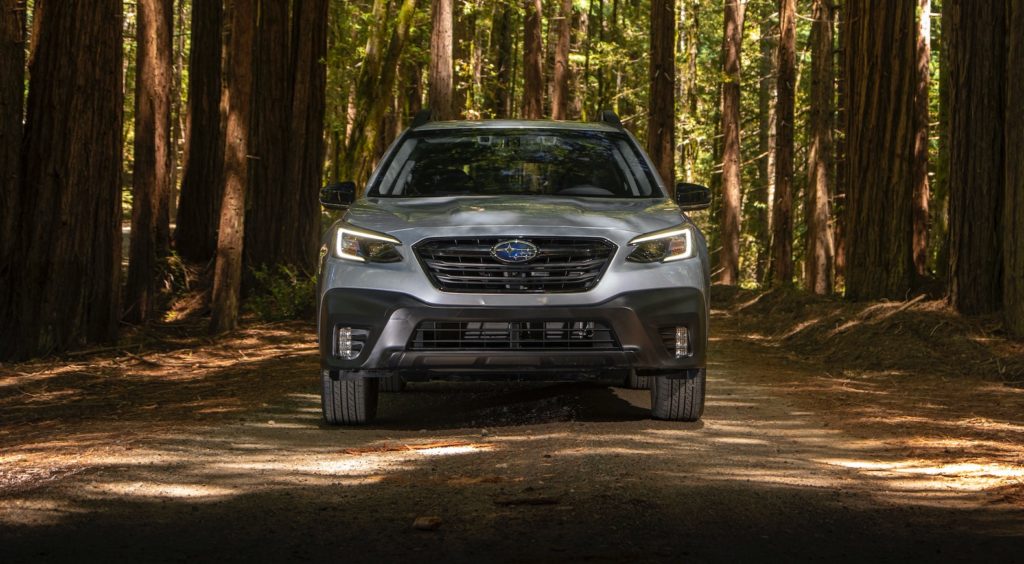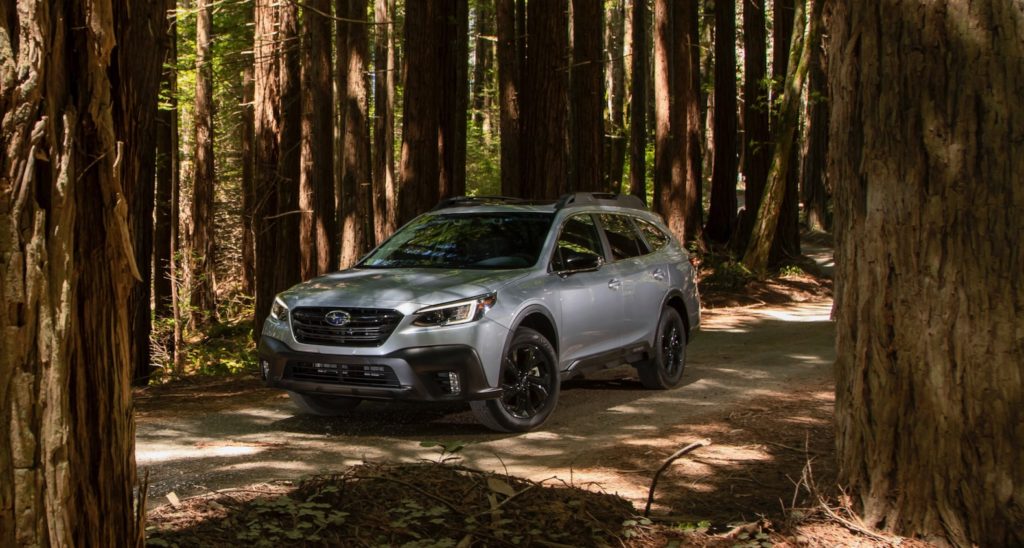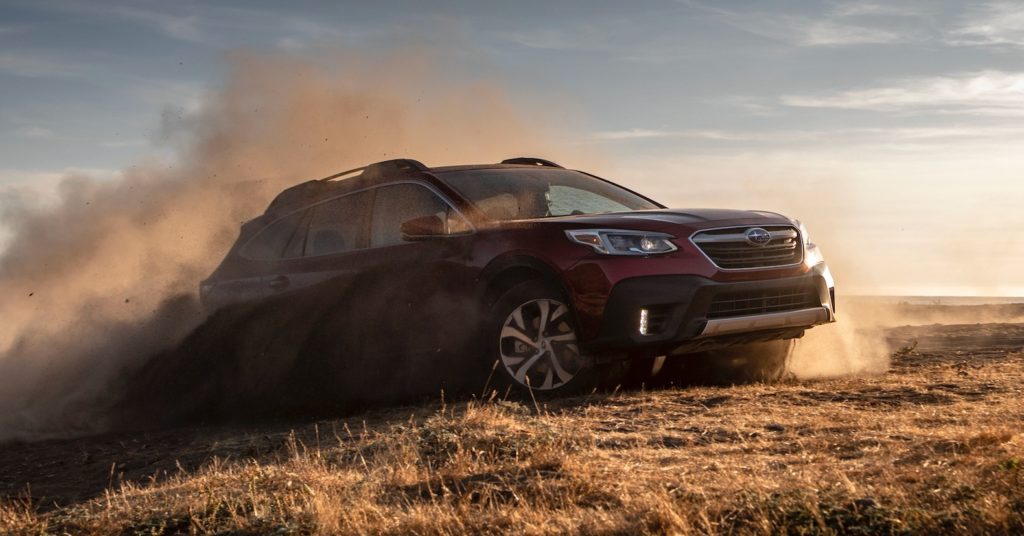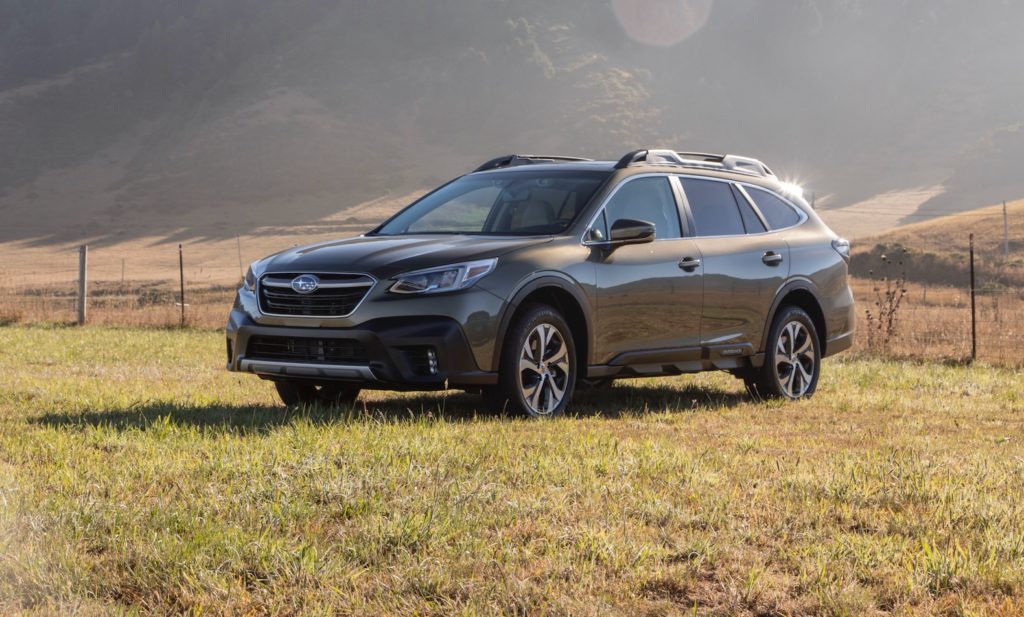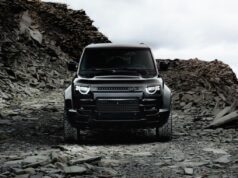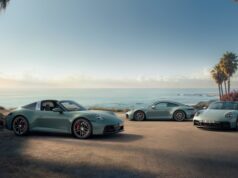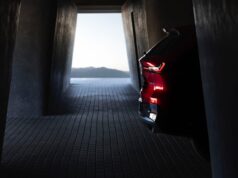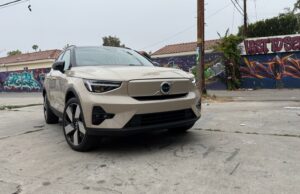The 2020 Subaru Outback is more refined than ever and features the same, remarkable off-road capability. The more things stay the same, the more things change. This year’s 2020 Subaru Outback does its best to convince shoppers that it’s the same crossover utility again on looks alone. Don’t be surprised then that this year’s Outback is new with updated powertrains and infotainment, and more usable cargo room. The little changes make a big difference. What didn’t change? The Outback is still immensely capable and a great value.
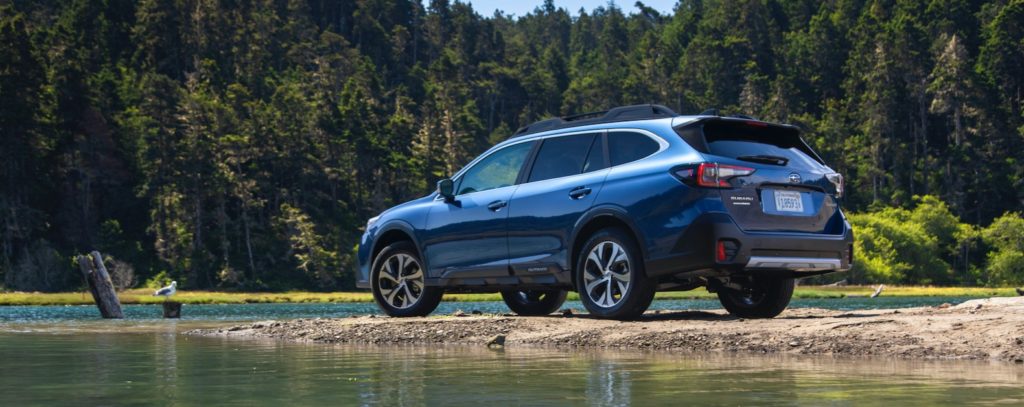
The 2020 Outback lightly revised the ingredients but didn’t change the recipe for the Subaru wagon’s success. It’s still a tall wagon with tough cladding underneath. Designers aimed for a hiking boot look with the new Outback by adding subtle flourishes and chunky side panels. The inside is dominated by a big 11.6-inch touchscreen in most models, with a comfortable and durable interior that’s ready for adventure. The Outback’s gift is incredible off-road capability and composure. The Subaru wagon has 8.7 inches of ground clearance that would make Jeep owners flinch, being able to barrel down two tracks without worry, and wade through water more than a foot deep.
Subaru’s designers didn’t strike out in a new direction for the new 2020 Outback. Few people may notice the differences between this version and last year’s. But few cars are as instantly recognizable on the road as an Outback. If it ain’t broke, you get the idea. The new Outback wears stacked LED fog lights on most models, and its gray body cladding rises a little higher on the nose. Along the sides, the Outback saves most of its flair for the bottom of the car, which was deliberately designed to look like the tread on a hiking boot. The Outback skips swoopy rooflines, or boxy SUV tones for more of the same.
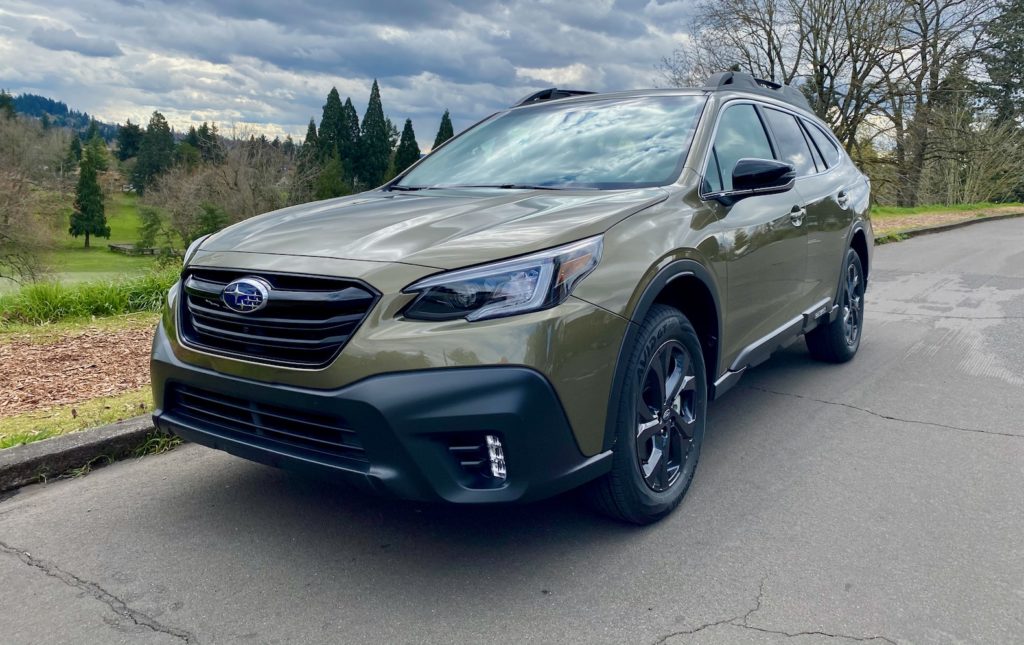
The base 2020 Outback doesn’t have scads of power, but luckily a new Turbo-4 is available. The new turbo-4 replaces last year’s thirsty flat-6 and it should bode well for high-altitude buyers. However, the base 2.5-liter flat-4, makes 182 horsepower, shifted through a CVT power all four wheels. The power is adequate. The capability? Outstanding. Although earlier versions of the Outback used a similarly sized engine, the 2020 Outback’s version is new. It’s borrowed from this year’s Forester and makes 176 lb-ft of torque.
The engine feels perkier than it is: Subaru’s throttle tip-in is quick, the pedal jumps from zero to 30 percent in a heartbeat, launching the Outback confidently off the line. Physics and weight follow closely behind and bring the Outback’s 0-60 mph time back to reality quickly, it still takes about 9 seconds to accelerate up to highway speeds. The Outback’s CVT isn’t to blame either. The transmission skips the rubber-band feeling for smooth, confident simulated shifts when the driver’s foot is really in it, and settles nicely when the Outback is on a long lope. Among CVTs from other automakers, Subaru’s is the most confident and responsive.
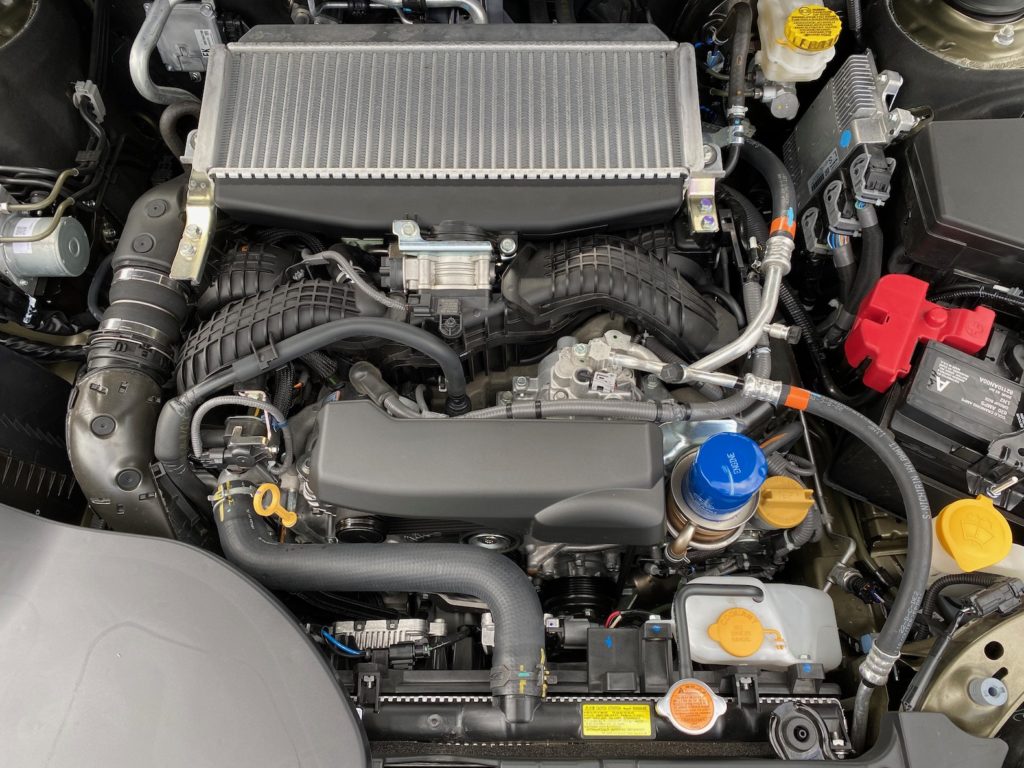
An optional 260-hp 2.4-liter turbo-4 that’s borrowed from the Ascent is new in the Outback XT, and it costs $2,350 on Outback Limited and Touring models. It’s the only engine available for Onyx Edition Outbacks. The turbo-4 replaces the 3.6-liter flat-6 from last year, which was thirsty. Subaru estimates that 1 in 4 buyers will opt for the uprated engine, we suggest 3 out of 4 buyers should opt for the engine. The XT mortgages a few mpg in the name of better performance. The XT’s throttle isn’t as nervous compared to the regular engine, which we welcomed. In our week long drive of the XT, it pulled off more competent passes at highway speeds and required less attention than the base engine on the pavement.
Take a hard right off the beaten path and every version of the Outback becomes an off-road superstar. The Outback has few rivals among crossovers for off-road performance, and it’s as capable as nearly all boxy SUVs, too. Front struts and rear double wishbones are complemented by superlative suspension tuning and chassis stiffness that transcends any perceived weakness in the powertrain. Put simply: The Subaru Outback can nearly go anywhere, comfortably. There’s very little nosedive in hard braking, however. And the Outback is mostly flat around corners, despite its 8.7 inches of ground clearance and tall wagon stance. That’s all supporting evidence for how effective engineers were in tuning the Outback’s chassis.
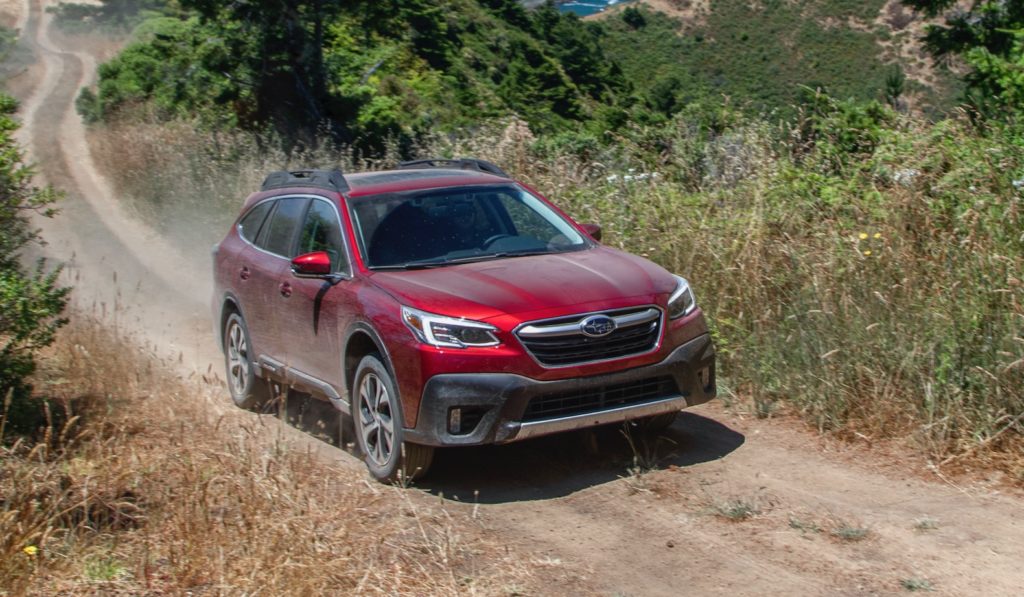
Most versions of the Outback will manage close to 29 mpg combined, according to the EPA. The EPA rates the 2020 Outback when equipped with a 2.5-liter flat-4 at 26 mpg city, 33 highway, 29 combined. The optional 2.4-liter turbo-4 doesn’t ask for much more fuel for its extra power. It rates 23/30/26 mpg. All Subarus are equipped with all-wheel drive. Whether you consider the Outback to be a wagon or crossover, it’s fuel-efficient without a hybrid powertrain. The EPA rates the Buick Regal TourX at 24 mpg combined, or the Volvo V60 at 27 mpg combined; both wagons. For comparison, the Hyundai Santa Fe crossover rates 25 mpg combined with front-wheel drive and the base engine.
The 2020 Outback is equipped with a multitude of standard active safety features and is rated as a Top Safety Pick from IIHS for crashworthiness. It also earns a five-star rating from the NHTSA. The Outback is equipped with eight airbags, including side-curtain airbags for rear passengers. The Outback’s frame is new, too. Subaru’s added more high-strength steel and reinforcements for small-overlap crash protection, which simulates hitting a smaller object such as a light pole, and for a newly developed federal test that offsets a moving object that crashes into the front of the car. It earned top “Good” ratings in all six crash tests performed by the IIHS, as well as “Superior” rating in crash avoidance systems, which resulted in a Top Safety Pick award. Every Outback is equipped with active safety features that include automatic emergency braking, adaptive cruise control, and active lane control. The latter uses new software and sensors and better tracks into the center of the lane, without much “pinballing” between the lanes. It’s improved over the first iterations of Subaru’s active lane control, and among the best at its price.
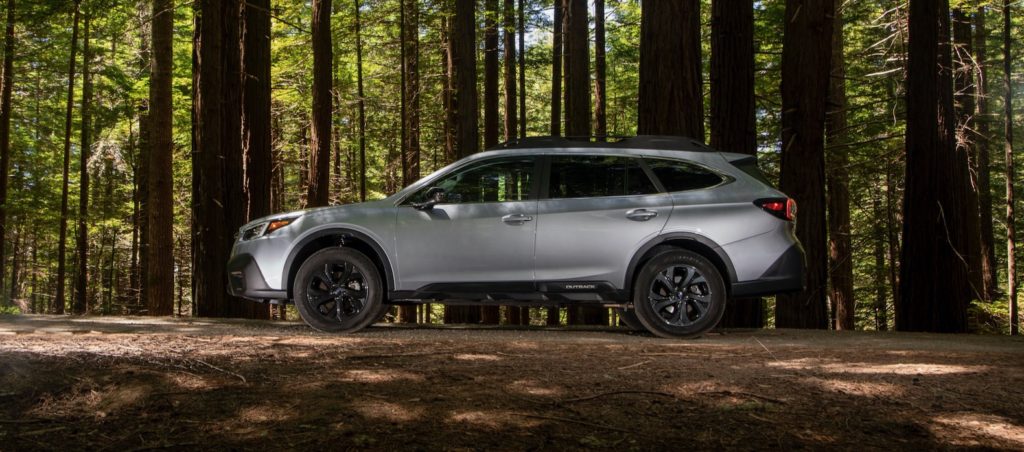
Hauling people and cargo is where the 2020 Outback shines. Older Outbacks were less comfortable than the kayaks riding on top. Not anymore. The new 2020 Outback is another step for Subaru toward modern, comfortable interiors in their cars; an upgrade over the prior generations. The new Outback is by the quietest and most refined Subaru to date. Most Outbacks will be shod in convincingly durable cloth interiors that are handsome and hardy. The front seats have adequate bolsters for a range of body types and ample thigh support for long hauls to the trailhead. The soft upper dash is a step up for Subaru, textured plastics of years past are mostly gone now. The cowl is lower than the outgoing version, and Subaru’s small vehicle display is now integrated to the touchscreen. It’s a boon to outward vision and a cleaner look.
The rear seats gently recline and wide door cutouts should make loading children and gear a breeze. There’s enough leg room for 6-footers to sit behind other 6-footers, and head room will only be an issue for the longest torsos. We wouldn’t whine in the back seat of the Subaru for long, it’s bright, airy, and comfortable for two. Three adults with average builds may ask for more shoulder room. With the rear seats up, the Outback swallows 32.5 cubic feet of cargo, which is down from prior years despite a bigger Outback this year. Why? Subaru says it’s due to changes in official testing for more accurate real-world figures. Grab the door handle-like grips in the cargo area and pull to fold the second row and that space opens up to more than 75 cubic feet. The load floor is low, wide, and flat, and the hatch cutout is very wide, which is a boon to loading and unloading gear. Like prior Outbacks, the new model adds roof racks with tie-down points ready for kayaks.
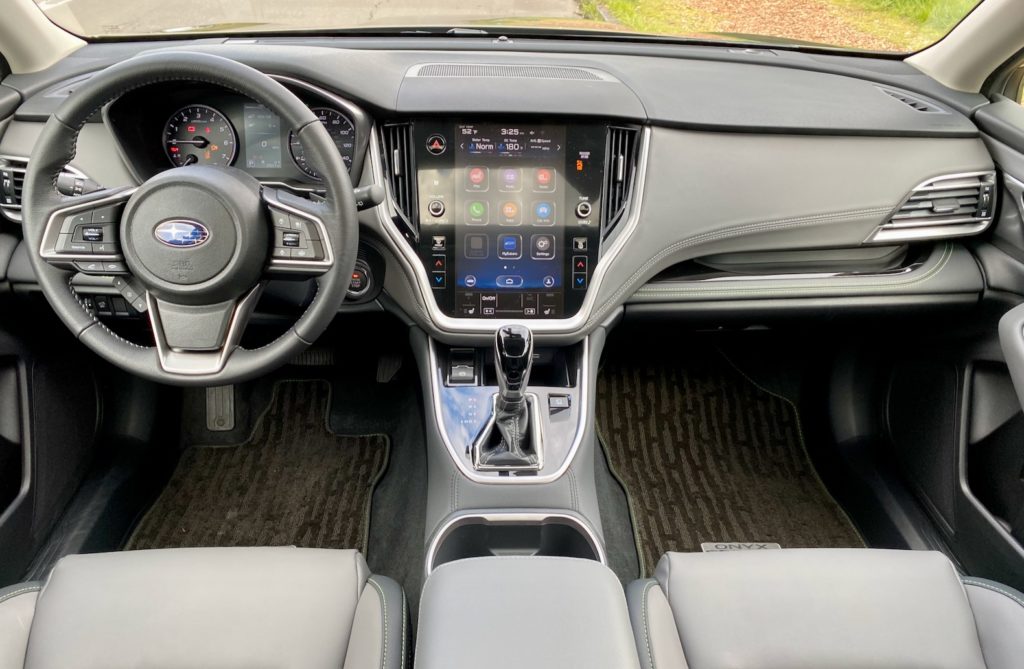
One of the biggest changes for the 2020 Outback inside is its 11.6-inch touchscreen infotainment, which is standard on every Outback except base models. The tablet-style touchscreen is clear and sharp and doesn’t fade in the sunlight. It’s equipped with standard Apple CarPlay and Android Auto compatibility. The only downside is the presentation for both smartphone systems is small and takes up less than half of the touchscreen. The information presented below the smartphone systems is mostly redundant. The home screen is filled with easy-to-read icons and simple buttons for climate control along the bottom. Vehicle information, weather, and other display functions are along a swipeable strip at the top. Sometimes long, deliberate presses are needed to launch apps, zoom in, or flip through radio stations. For Subaru diehards who’ve used the automaker’s 7.0- and 8.0-inch touchscreens before, the 11.6-inch touchscreen won’t be a radical departure. If you haven’t been in a Subaru for a while, welcome to the future.
The 11.6-inch touchscreen may draw stares, but the Outback’s value should draw smiles. Subaru offers the Outback in base, Premium, Limited, and Touring specifications that hardly skimp on features. Every Outback gets impressive active safety features, a generous touchscreen for infotainment, power features, Bluetooth connectivity, all-wheel drive, and cloth upholstery for about $27,500 to start. The base Outback isn’t bad but it doesn’t offer many options. It’s equipped with twin 7.0-inch touchscreens for infotainment and vehicle functions, with Apple CarPlay and Android Auto compatibility. In addition to power features and cloth upholstery, the base Outback is equipped with two USB charge ports, 17-inch wheels, a split-folding rear seat, and LED headlights.
The Outback Premium, which costs less than $30,000 to start, and adds an 11.6-inch tablet-style touchscreen for infotainment, two more USB charge ports for rear-seat riders, power-adjustable driver’s seat, heated front seats, dual-zone climate control, and sound-insulating front windows for a quieter cabin. Keyless ignition, navigation, blind-spot monitors, a power liftgate, and moonroof are on the options list. The top Outback Touring gets a driver attention monitor, a front-view camera, nappa leather upholstery, a heated steering wheel, and cooled front seats. With the base engine, the Outback Touring costs about $38,400. The uprated engine, which is available on Outback Limited and Touring wagons adds $2,350 to the bottom line. An Onyx edition, which was our handsome test vehicle, adds blacked-out trim, the uprated engine, is equipped similarly to the Outback Premium, and still costs less than $36,000.
Our choice and favorite is the the 2020 Subaru Outback Onyx. It has impressive performance with the standard turbo engine, refined driving manners both on and off road, a long history of Subaru reliability and safety, and bakes in great value that won’t break the bank. All of this comes in a handsome looking package that can go just about anywhere a boulder hopping SUV can go while still hauling everything you could need in life. The 2020 Subaru Outback is an all-star.
For all your new car shopping needs, check out: drivevise.com Vehicle shopping made simple!

